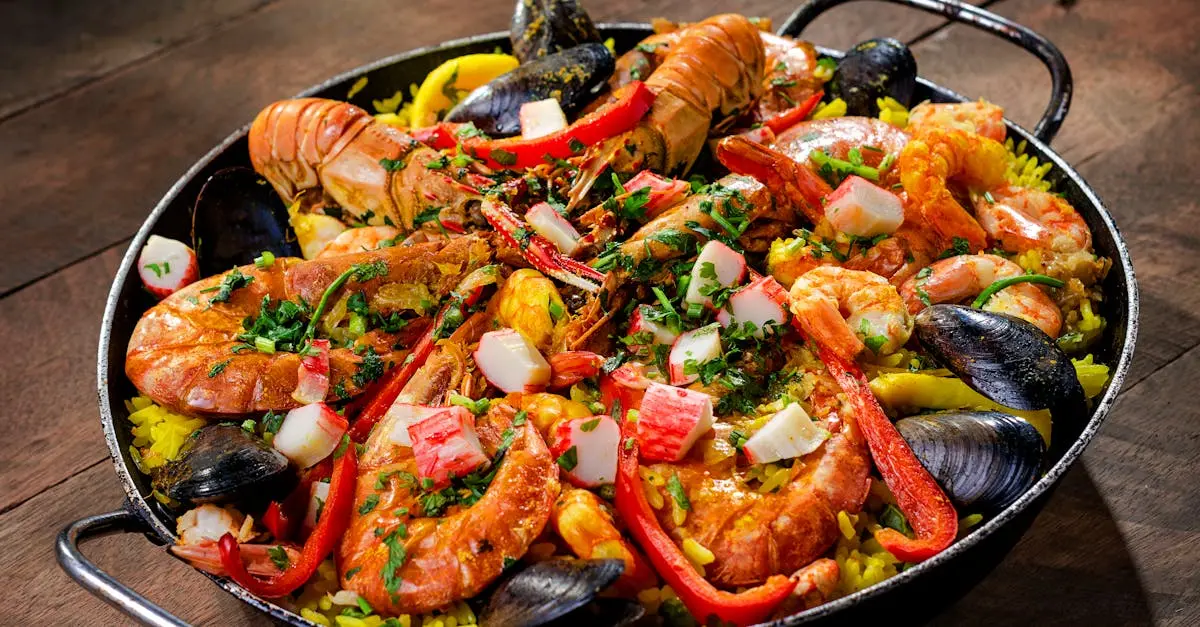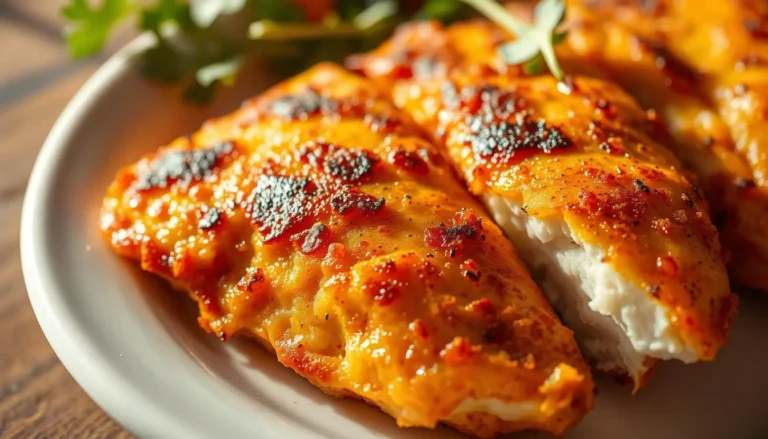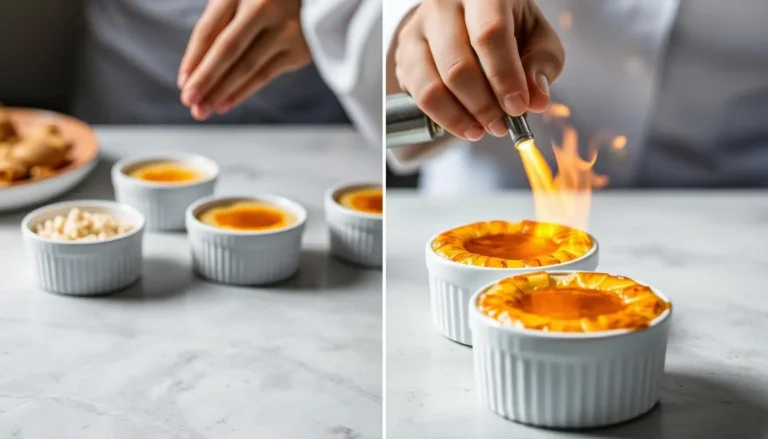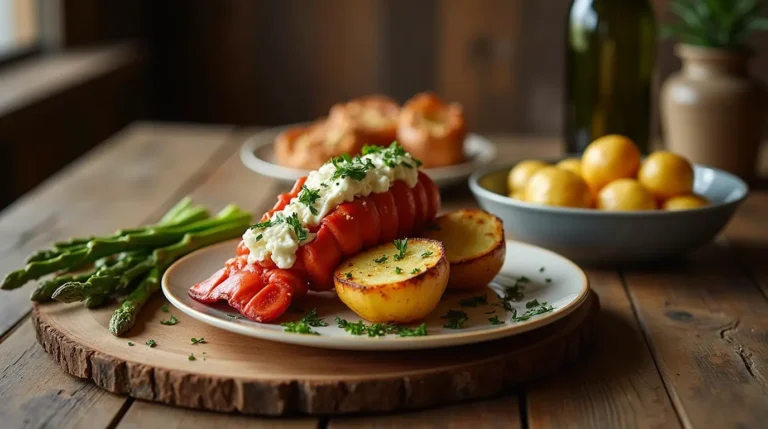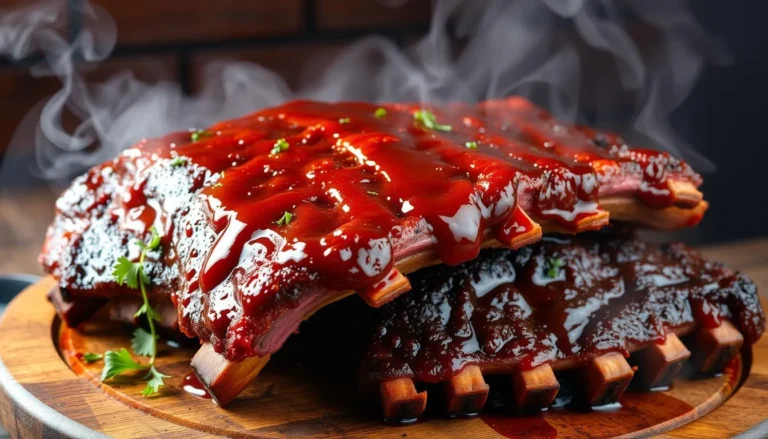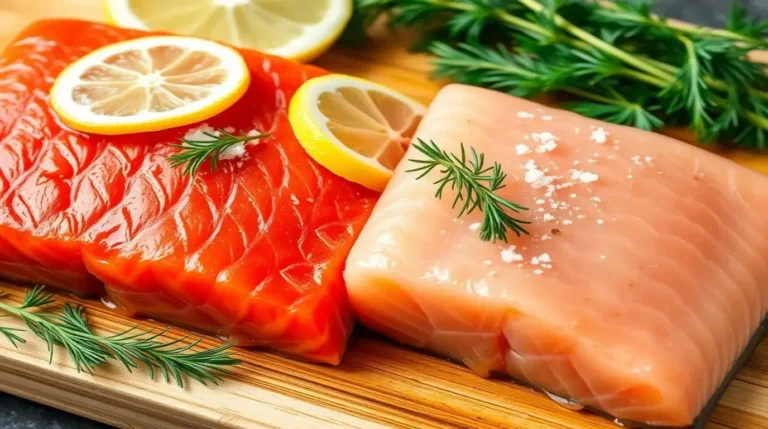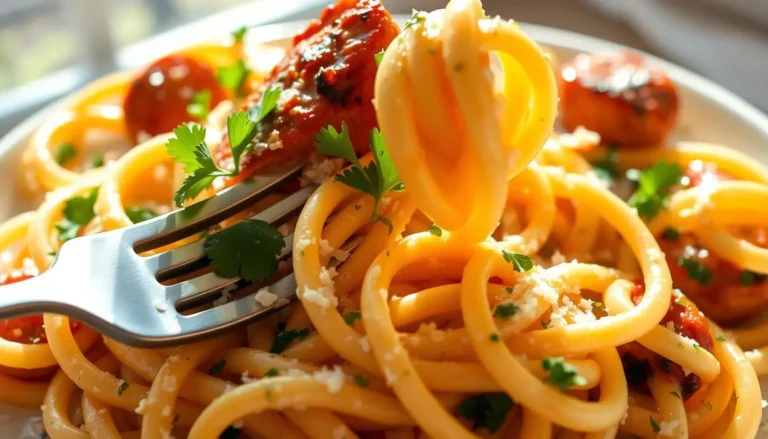From Valencia to Your Kitchen: How to Make the Perfect Paella
Embark on a culinary journey from Valencia to your very own kitchen as we delve into the art of making the perfect paella. Are you tired of bland, uninspired meals and yearning for a taste of authentic Spanish cuisine? In this article, we will explore the rich history, essential ingredients, and step-by-step techniques needed to recreate this iconic dish in your home.
Get ready to tantalize your taste buds with the vibrant flavors of saffron-infused rice, succulent seafood, and a medley of aromatic spices. By the end of our guide, you will not only have the skills to whip up a delicious paella but also gain a deeper appreciation for the cultural heritage and traditions that make this dish an enduring favorite. Let’s turn your kitchen into a bustling Valencian eatery and savor every mouthwatering bite together!
Table of Contents
The History of Paella
Origins in Valencia: Paella, a traditional Spanish dish, originated in the Valencia region. Its roots can be traced back to the mid-19th century when farmers cooked rice with readily available ingredients such as vegetables, rabbit, and chicken over an open fire. This humble peasant dish eventually evolved into the beloved paella we know today.
Evolution of Ingredients: Over time, paella recipes diversified as different regions added their own twist to the dish. Seafood paella became popular in coastal areas like Barcelona, while Valencians maintained their traditional recipe with the freshest seafood and meats. The versatility of paella allowed it to adapt to various tastes and preferences, making it a staple in Spanish cuisine.
Cultural Significance: Paella is not just a meal; it’s a symbol of community and celebration in Spain. Families and friends gather around a steaming pan of paella, sharing stories and laughter as they enjoy this flavorful dish together. The act of cooking and sharing paella embodies warmth, hospitality, and the joy of coming together over a delicious meal.
Ingredients Matter: Choosing the Best Seafood
When it comes to making an authentic and delicious paella, selecting the right seafood is crucial. The key is to use fresh, high-quality ingredients that will enhance the flavors of this iconic dish. Opt for a variety of seafood such as shrimp, mussels, clams, and squid to create a harmonious blend of flavors and textures.
For the best results, head to your local fish market or seafood store to source the freshest catches available. Look for plump shrimp with a firm texture, mussels that are tightly closed and free of any cracks, clams that smell like the ocean, and tender squid without any fishy odor. By prioritizing quality over quantity, you can elevate your paella from good to exceptional.
Remember that each type of seafood contributes its own unique taste profile to the dish. The sweetness of shrimp pairs beautifully with the brininess of mussels and clams, while the delicate flavor of squid adds depth to the overall dish. By carefully selecting a mix of seafood that complements each other, you can create a paella masterpiece that will delight your taste buds and transport you straight to Valencia.
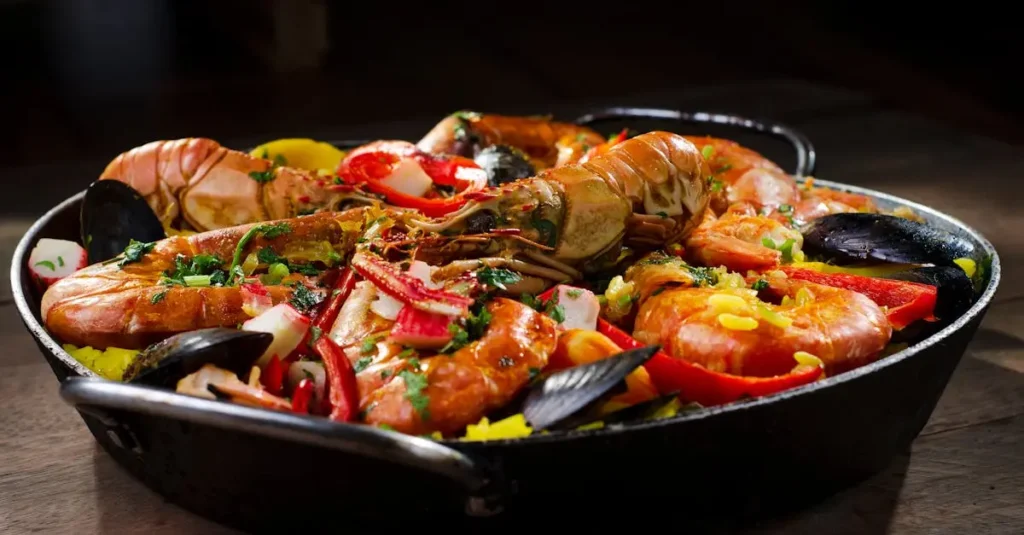
Step-by-Step Guide to Cooking the Perfect Paella
Creating the Flavor Base: Start by sautéing onions, garlic, and bell peppers in olive oil until fragrant. Add diced tomatoes and cook until they form a thick sauce. This aromatic base will infuse your paella with rich, savory flavors that are quintessential to this Spanish dish.
Choosing the Right Rice: Use short-grain Bomba or Calasparra rice for an authentic paella experience. These varieties absorb liquid evenly without becoming mushy, resulting in a perfectly textured dish. Spread the rice evenly over the pan after adding it to ensure that each grain cooks uniformly and absorbs all the delicious flavors.
The Art of Simmering: Once you’ve added broth, saffron, and your choice of proteins like chicken, seafood, or chorizo, resist the urge to stir frequently. Allow the paella to simmer undisturbed over low heat so that a socarrat forms—a caramelized crust at the bottom of the pan that adds depth and complexity to your dish. Patience is key to achieving paella perfection!
Bringing the Flavors of Valencia to Your Kitchen
Embrace the vibrant and aromatic essence of Valencia by incorporating traditional Spanish ingredients into your paella. Saffron, the golden treasure of Spanish cuisine, infuses a rich flavor and vivid color into the dish. Enhance your paella with Bomba rice, known for its ability to absorb flavors while maintaining a satisfying texture.
Transport yourself to the coastal regions of Spain by selecting fresh seafood such as prawns, mussels, and clams for your paella. These oceanic gems bring a burst of briny sweetness that harmonizes perfectly with the savory notes of chorizo and paprika. The combination of land and sea elements in paella embodies the diverse culinary heritage of Valencia.
Immerse yourself in the culinary traditions of Valencia by savoring every bite of your homemade paella with friends and family. The communal aspect of sharing a large pan of this delectable dish symbolizes warmth, hospitality, and togetherness – values deeply rooted in Spanish culture. Let the flavors linger on your palate as you revel in the joy of bringing a taste of Valencia into your own kitchen.
Tips and Tricks for a Delicious Paella
Creating the perfect paella requires attention to detail and some insider tips. One key trick is to use high-quality saffron, which not only adds flavor but also gives your dish that signature golden hue. Additionally, allowing the rice to form a crispy bottom layer, known as socarrat, adds depth and texture to your paella.
To enhance the flavors of your paella, consider using homemade seafood or chicken stock instead of water. This simple substitution can elevate the taste profile of your dish significantly. Another helpful tip is to let your paella rest for a few minutes after cooking. This allows the flavors to meld together and ensures each bite is bursting with deliciousness.
When it comes to seasoning your paella, remember that less is often more. A light hand with salt and spices allows the natural flavors of the ingredients to shine through without overpowering one another. Finally, don’t be afraid to get creative with toppings such as fresh herbs or a squeeze of lemon before serving. These little touches can take your paella from good to exceptional.
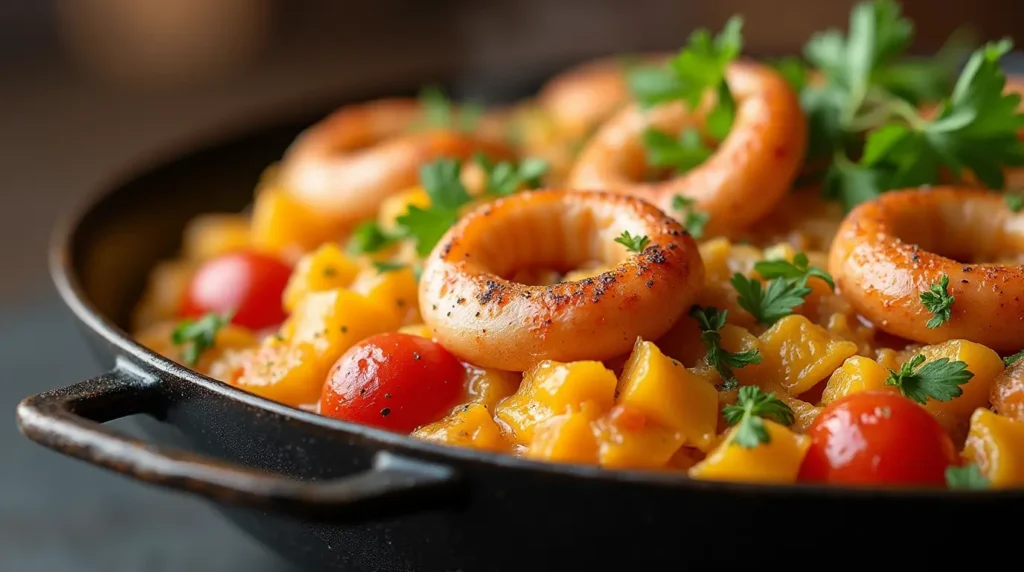
Pairing Your Paella with the Perfect Wine
When it comes to pairing wine with paella, there are a few key considerations to keep in mind. The rich and savory flavors of the dish call for a wine that can complement and enhance these tastes without overwhelming them. Opting for a Spanish varietal such as Tempranillo or Albariño can be an excellent choice.
Tempranillo, with its notes of red fruit and earthiness, pairs beautifully with the smoky flavors of chorizo and paprika often found in paella. Its medium to full body provides a nice balance to the dish’s complexity. On the other hand, Albariño offers crisp acidity and citrus notes that cut through the richness of seafood paella, creating a refreshing contrast.
For those who prefer white wine, a Spanish Verdejo or even a light-bodied Cava can work wonders with paella. Verdejo’s aromatic profile of tropical fruits and herbs harmonizes well with vegetable-based paellas, while sparkling Cava adds a touch of celebration to any gathering centered around this iconic Spanish dish.
Serving and Enjoying Your Culinary Masterpiece
Once your paella is cooked to perfection, it’s time to serve and enjoy this flavorful dish. The best way to serve paella is family-style, straight from the pan it was cooked in. This communal dining experience adds to the charm and authenticity of enjoying a traditional Spanish meal.
As you dish out the paella onto individual plates, make sure each serving includes a generous portion of the socarrat—the crispy, caramelized layer of rice at the bottom of the pan. This coveted part of paella adds a delightful crunch and depth of flavor that truly elevates the dish.
To fully savor your culinary masterpiece, take a moment to appreciate the vibrant colors and enticing aromas wafting from your plate. The combination of tender seafood, flavorful rice, and aromatic spices should be savored slowly, allowing you to fully immerse yourself in this sensory experience that transports you to the sunny shores of Valencia with each bite.
Embracing the Spanish Tradition in Your Home Cooking
Preserving Authenticity:
When it comes to paella, authenticity is key. Embrace the Spanish tradition by using traditional ingredients like saffron, Bomba rice, and fresh seafood. The flavors of Spain are a celebration of culture and history that can be brought into your home through the art of cooking.
Cultural Appreciation:
By immersing yourself in the process of making paella, you’re not only creating a delicious dish but also honoring the rich culinary heritage of Valencia. Each step in preparing paella is a tribute to the generations of cooks who have perfected this iconic dish, allowing you to connect with Spanish culture in a meaningful way.
Sharing Joy Through Food:
Inviting friends and family to enjoy your homemade paella is an invitation to share in the joy and warmth of Spanish hospitality. Cooking and serving this traditional dish can create memorable moments filled with laughter, good conversation, and appreciation for the flavors that bring people together across cultures.
Conclusion
As we come to the end of our culinary journey from Valencia to your kitchen, it’s clear that paella is more than just a dish—it’s a celebration of flavors, traditions, and togetherness. By mastering the art of making the perfect paella, you have not only explored a rich culinary history but also created a delicious masterpiece that brings people together.
With each flavorful bite of your homemade paella, you are not just savoring a meal but embracing a cultural experience that transcends borders and connects us through the universal language of food. So next time you gather your loved ones around the table to enjoy this Spanish delight, remember that you are not just cooking a dish—you are sharing a piece of Valencia with each and every guest.
FAQ
Q: Can I use a different type of rice for paella?
While traditional paella is made with short-grain Bomba rice, you can experiment with other types like Arborio or Calasparra rice. Just keep in mind that the cooking time and liquid absorption may vary, so adjust accordingly to achieve the desired texture and consistency.
Embracing innovation in your paella recipe can lead to delightful surprises. Stay open to exploring different rice varieties to create a uniquely delicious dish that reflects your personal taste.
Q: Is it necessary to use a paella pan?
Using a traditional wide, shallow paella pan is ideal for achieving the signature socarrat (crispy bottom) and even cooking of the dish. However, if you don’t have a paella pan, you can still make delicious paella using a wide skillet or even a large sauté pan.
The key is to spread the ingredients evenly in the pan and resist the urge to stir too frequently. This way, you can still capture the essence of authentic paella without compromising on flavor or texture.
Q: How do I store leftover paella?
To store leftover paella properly, allow it to cool completely before transferring it to an airtight container. Refrigerate any remaining portion promptly and consume within 3-4 days for optimal freshness.
If reheating, add a splash of broth or water before gently heating on the stovetop to prevent drying out. Embrace this opportunity for another enjoyable meal that brings back memories of your culinary journey from Valencia!

